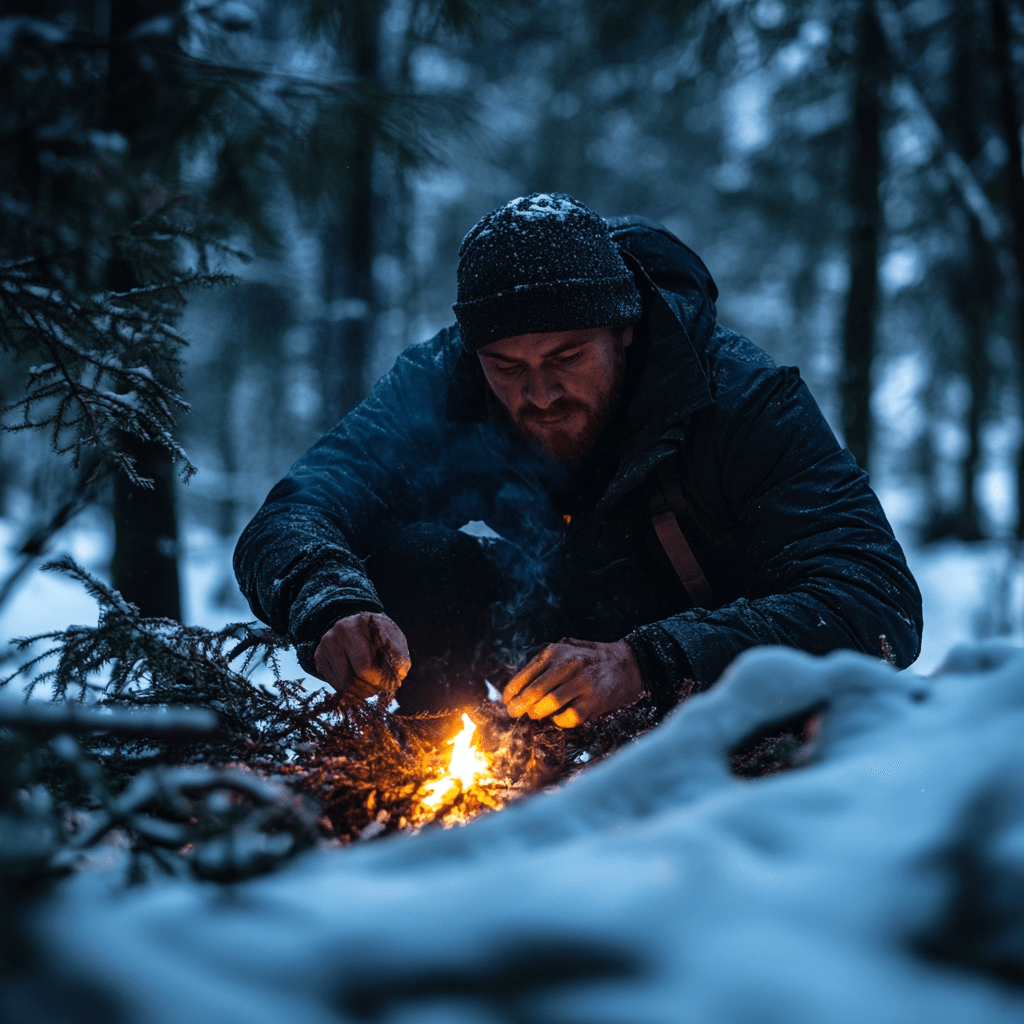
Imagine being stranded in the wilderness, with nothing but your wits and the clothes on your back. The difference between survival and disaster often comes down to one critical skill: knowing exactly what to prioritize when every moment counts. Welcome to the ultimate guide to survival prioritization – where smart choices can mean the difference between life and death.
Mastering the Rule of Threes is only one step in preparing for survival—explore essential wilderness skills here.
Master survival prioritization with tools like SpecOps Bushcrafting, a guide designed by a Special Forces expert to help you prepare for any challenge.
Understanding the Rule of Threes: Your Survival Lifeline
The Rule of Threes isn't just a catchy survival mantra – it's a scientifically backed approach to staying alive in the most challenging environments. Here's the breakdown that could save your life:
- 3 Minutes Without Air: Respiratory emergencies take top priority
- 3 Hours Without Shelter: Protect yourself from extreme temperatures
- 3 Days Without Water: Hydration is your next critical focus
- 3 Weeks Without Food: Nutrition becomes a concern only after addressing more immediate needs
Survival Priorities: A Step-by-Step Breakdown
1. Mental Resilience: Your Most Powerful Survival Tool
Before we dive into physical survival techniques, let's talk about the most crucial survival asset – your mind. A mental attitude can make or break your survival situation. Panic is your worst enemy, while calm, strategic thinking is your greatest ally.
Pro Tip: Use the STOP method in emergencies:
- Stop and assess your situation
- Think through your options
- Observe your environment
- Plan your next moves
Building mental resilience starts with learning survival basics early—discover 10 critical survival skills for kids here.
Stay mentally and physically resilient with resources like The Home Doctor, a guide for practical health strategies in emergencies.
2. Shelter: Your First Physical Priority
When survival is on the line, shelter isn't a luxury – it's a necessity. Your body can only survive a few hours in extreme temperatures, making shelter your immediate concern after ensuring you can breathe.
Quick Shelter Survival Strategies:
- Use natural formations like caves, dense tree clusters
- Create improvised shelters with available materials
- Prioritize protection from wind, rain, and ground moisture
Top Shelter Recommendation: SOL Emergency Bivvy – An ultralight, waterproof emergency shelter that could be a literal lifesaver.
Improvised shelters can save your life, but having a durable plan for extreme conditions is essential—explore 13 storm shelter ideas here.
Secure your warmth and safety with Grid Doctor 3300 EMP, a guide to preparing for extreme survival scenarios.

Shelter first: Stay safe from extreme weather.
3. Water: The Liquid of Life
Dehydration can incapacitate you faster than you might imagine. In survival situations, finding and purifying water becomes critical.
Water Sourcing and Purification Techniques:
- Look for running water over stagnant sources
- Always purify water, even if it looks clean
- Use multiple purification methods when possible
Essential Gear: LifeStraw Personal Water Filter – Your compact solution for safe drinking water in any emergency.
Secure reliable water sources with Air Fountain, a guide for extracting water from the air in any environment.

Water is life: Filter every drop for survival.
4. Fire: Survival's Multipurpose Miracle
Fire isn't just about warmth – it's about survival on multiple levels:
- Provides heat and protection from hypothermia
- Purifies water
- Cooks food
- Signals for rescue
- Provides psychological comfort
Fire-Starting Essentials: Gerber Bear Grylls Fire Starter – Reliable ignition when you need it most.
Fire provides warmth, safety, and comfort—learn how to build a fire even in the rain here.
The Final Survival Plan includes fire-starting techniques to prepare for any emergency.

Fire essentials: Warmth, safety, and survival.
5. First Aid and Signaling
While not immediately life-threatening, having basic first aid skills and the ability to signal for help can be crucial in prolonged survival situations.
Must-Have First Aid Kit: RHINO RESCUE Mini First Aid Kit Ultralight.
Signaling Methods:
- Satellite communicators
- Signal mirrors
- Bright-colored clothing
- Smoke signals
- Emergency radio
Carrying a first aid kit and signaling tools is critical—see 50 must-have survival items here.
Boost your signaling techniques with Blast Proof, a guide for complete survival preparedness.

Water is life: Filter every drop for survival.
Environmental Considerations: Adapting Your Priorities
Survival priorities shift dramatically based on your environment:
- Desert: Water and shade become paramount
- Arctic: Shelter and fire take precedence
- Tropical: Protection from moisture and insects becomes critical
Adapting your priorities depends on the environment—learn essential wilderness navigation skills here.
The Psychology of Survival Prioritization
Survival isn't just a physical challenge – it's a mental game. Your ability to:
- Stay calm
- Make rational decisions
- Adapt to changing circumstances
These mental skills often determine your survival more than any piece of gear.
Final Thoughts: Your Survival Checklist
Before your next adventure, ensure you're prepared:
1. Learn and practice survival skills
2. Carry essential survival gear
3. Develop a resilient mindset
4. Always inform someone of your plans
Build your preparedness with The Lost Superfoods, a guide for long-term food storage and preservation.
Call to Action
Survival isn't about being a superhero – it's about being prepared, smart, and adaptable. Start your survival education today. Take a wilderness survival course, practice your skills, and remember: knowledge weighs nothing, but can mean everything.
Disclaimer: While this guide provides crucial survival insights, always seek professional training and never replace expert advice with online information.
Gear up, stay smart, and may your adventures always end safely.
AATF Survival does not agree with all the statements provided in the given content.
Your source for expert survival strategies and emergency preparedness tips.
Privacy policy | Terms of use | Cookies




